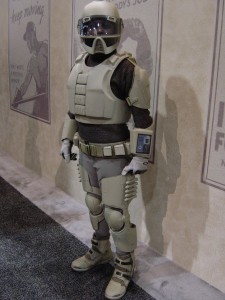In February PEO-Soldier officials down selected four companies from a field of sixteen to provide candidates for a releasable plate carrier demonstration. At the time Army officials made it clear that there was no formal program to procure Releasable Plate Carriers. However, over the last two months, it looks like things have changed.
From the four companies (Eagle Industries, KDH Defense Systems Inc, MSA Paraclete, and Tactical Assault Gear), the Army is currently evaluating five carriers at Yuma Proving Ground. Eagle has two carriers under evaluation; the Scalable Plate Carrier, currently issued to select USMC units as well as a variant issued to USSOCOM.
Soldiers from the 82nd Airborne Division and the 173rd Airborne Brigade will wear each of the company’s plate carrier designs while road marching, running through obstacle courses and shooting on live-fire ranges. Army test and evaluation personnel will compare the candidates’ performance against the IOTV without neck and groin protection.
Earlier this month the Army approved a plan to conduct a combat evaluation in Afghanistan of a kit of candidate lightweight combat equipment developed by the Asymmetric Warfare Group in conjunction with industry utilizing a combination of Commercial and Government Off The Shelf products. The approval came weeks after the demonstration was put on hold over questions surrounding safety releases for the Eagle Releasable Carrier and associated armor systems currently used by USSOCOM. Reports indicate that the matter received SECDEF attention. This may explain why Army PM Soldier Survivability is now characterizing the current “Soldier Protection Demonstration” as a more formal procurement activity.
Last Summer, the Marine Corps fielded limited numbers of a Scalable Plate Carrier manufactured by Eagle Industries. Currently, they are testing an “Improved Scalable Plate Carrier”. Based on lessons learned from the initial fielding, the Marine Corps is working to improve the range of motion and mobility in the shoulder area, donning and doffing, and enhanced integration with the cummerbund and side plates.

















































































































